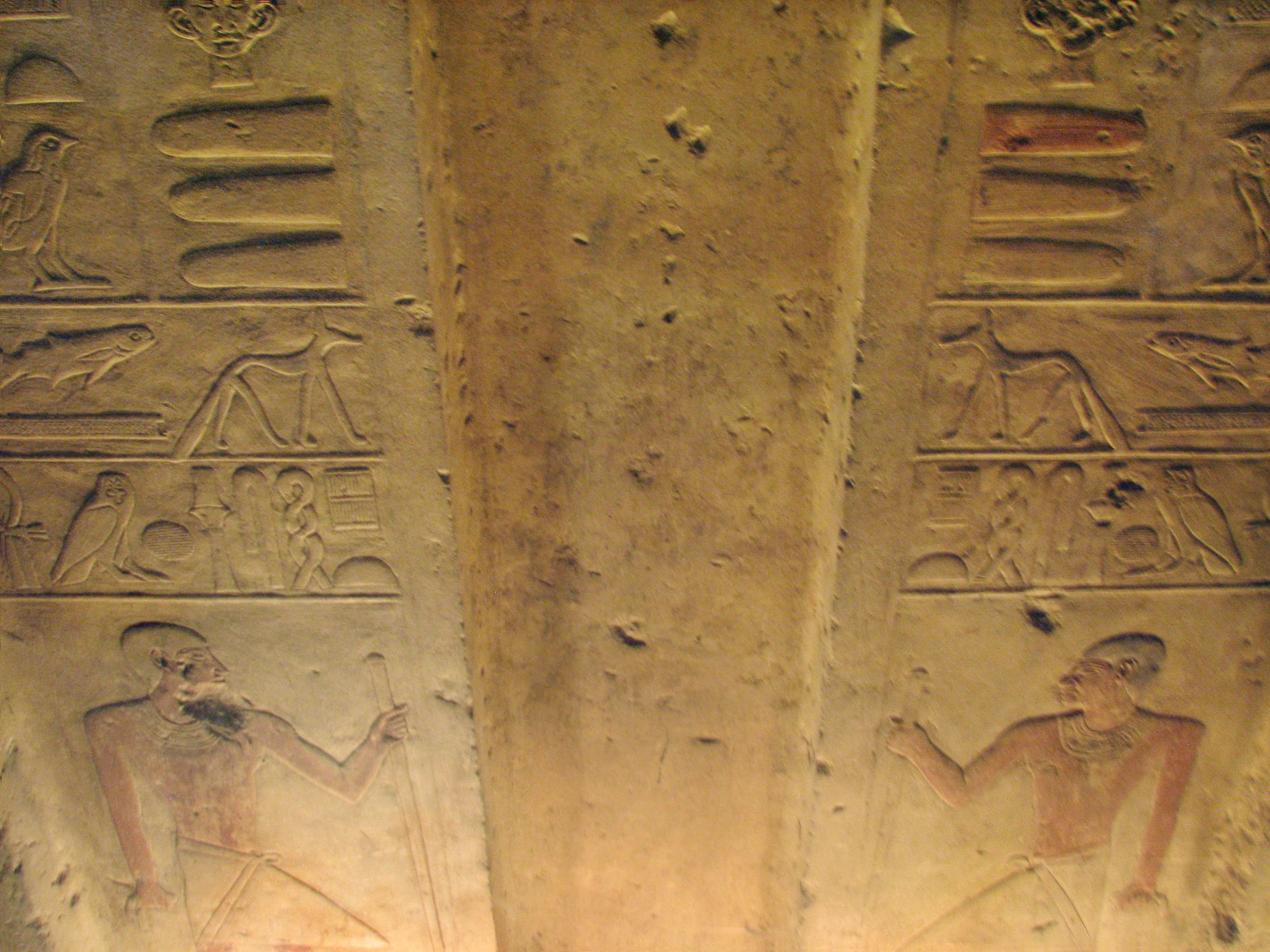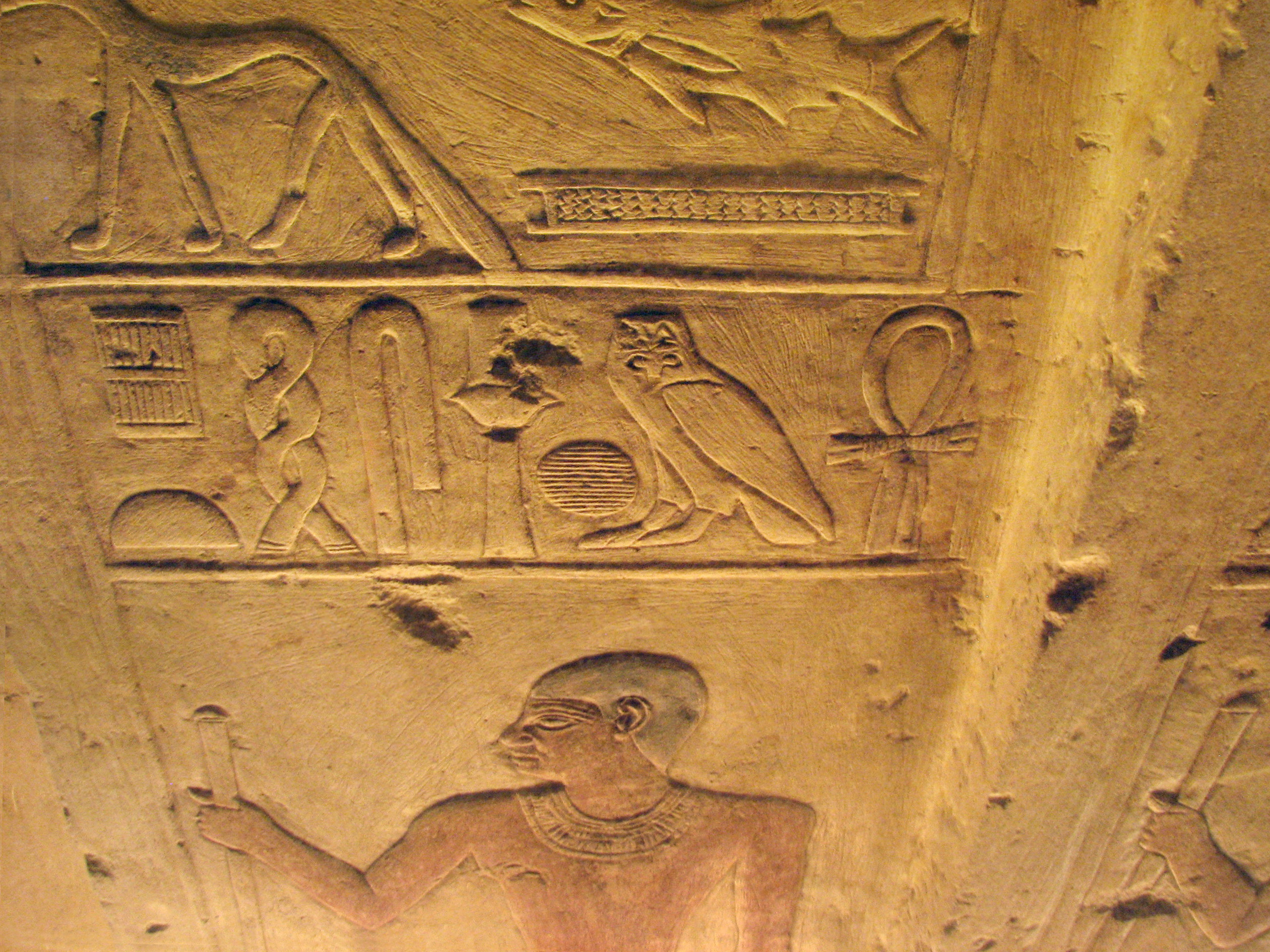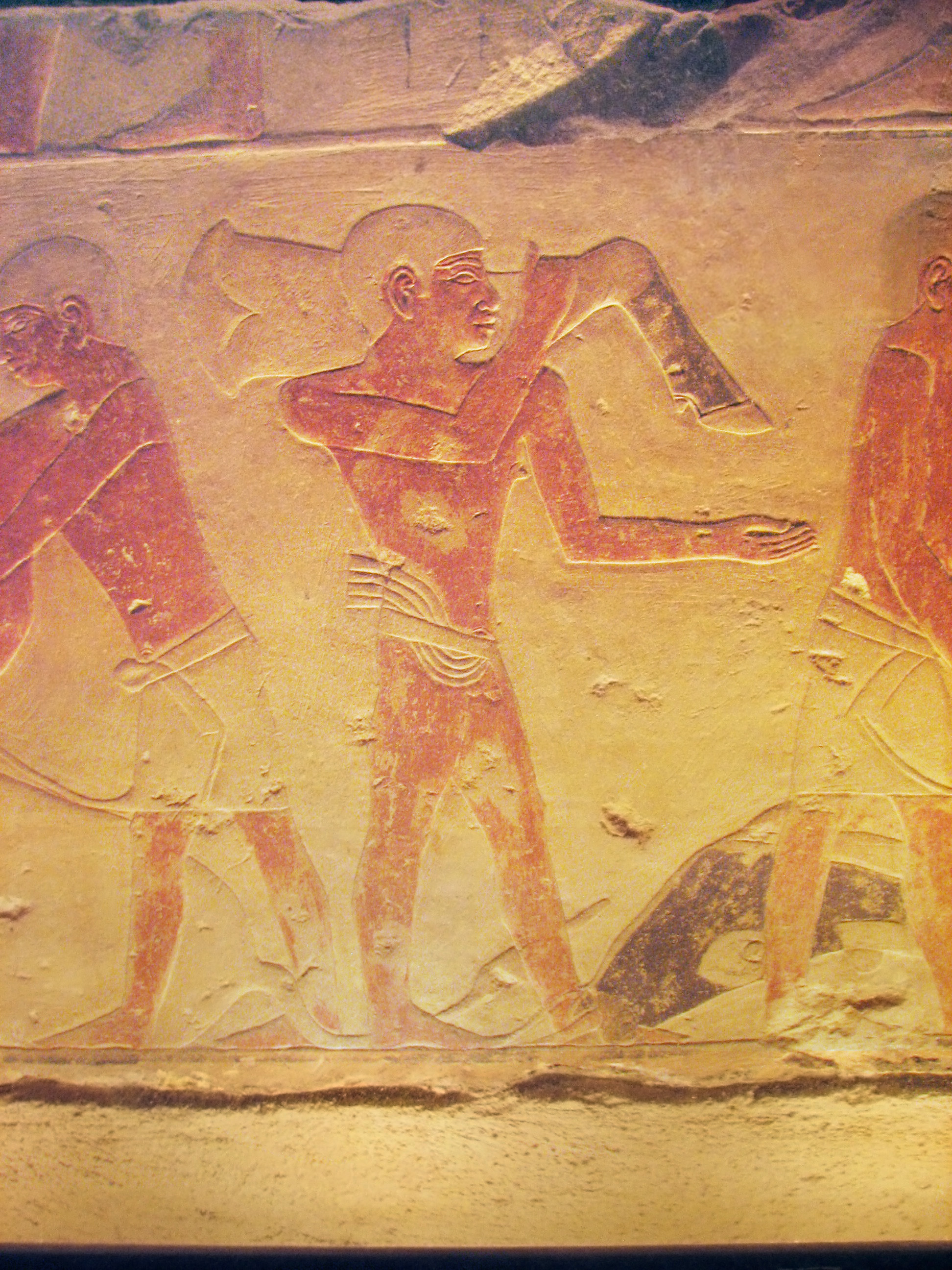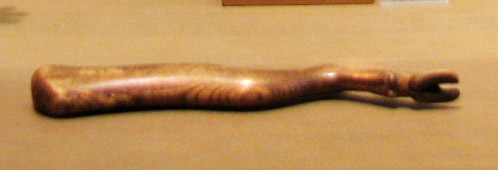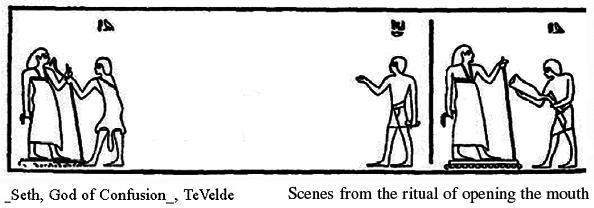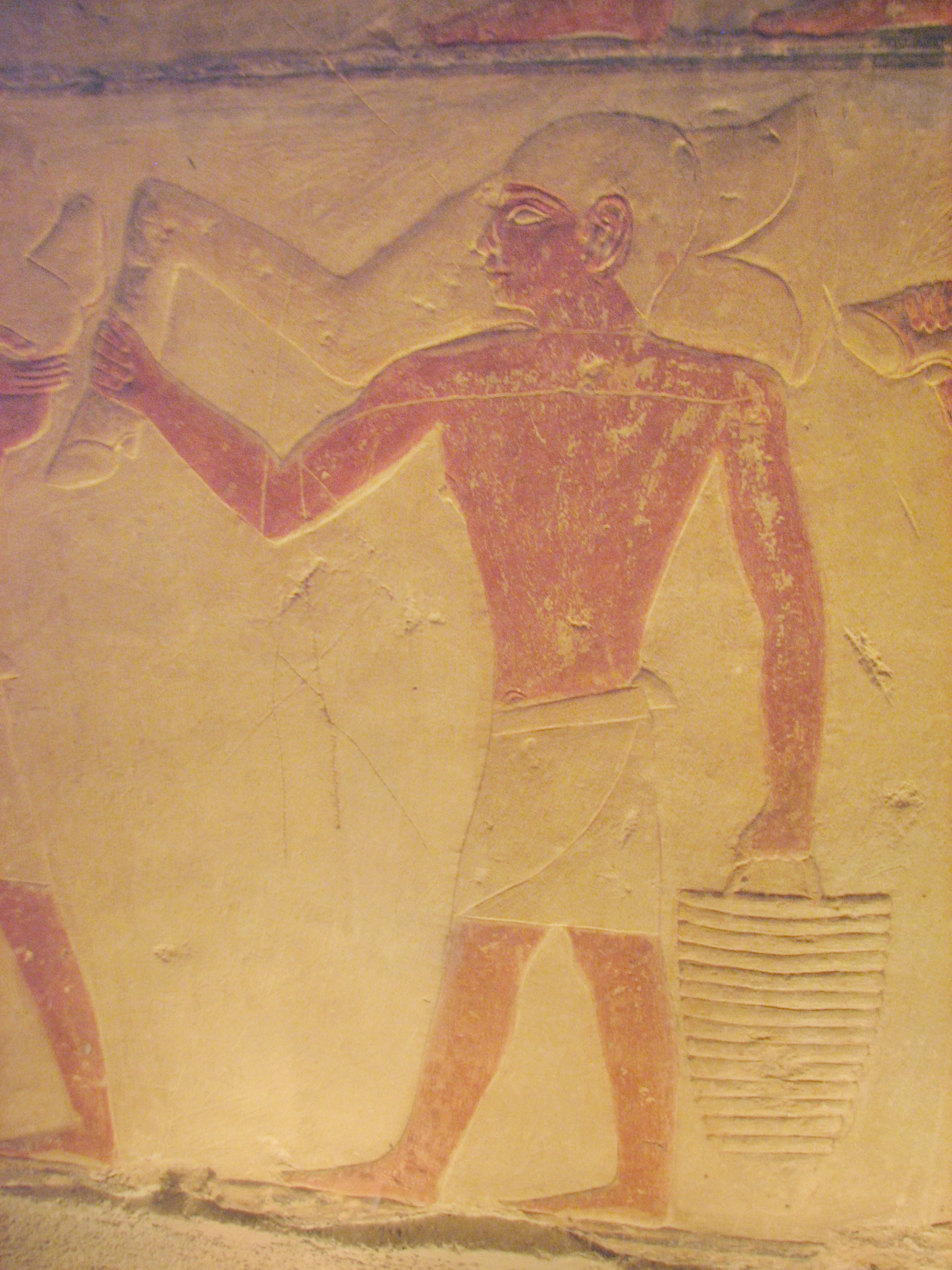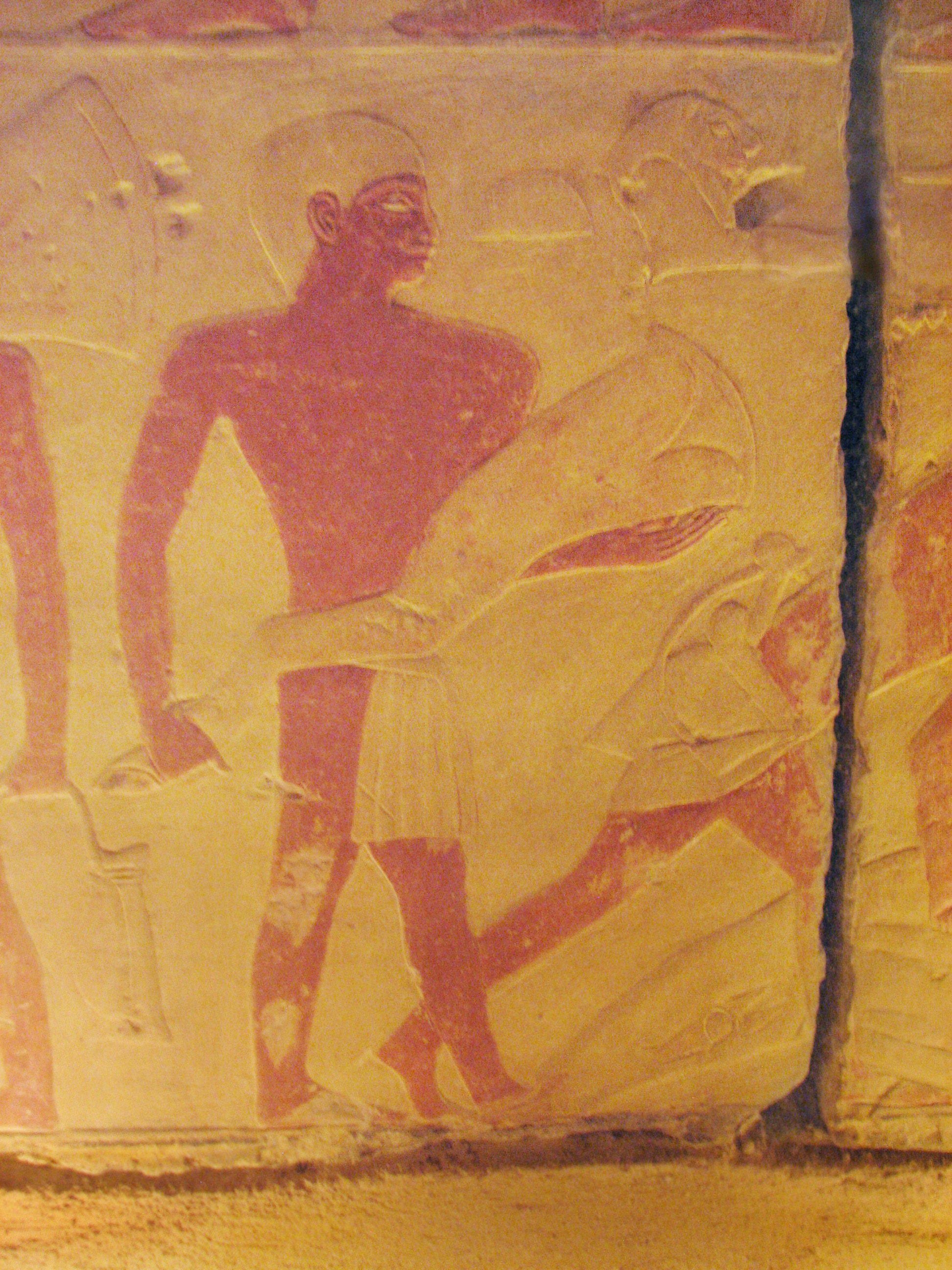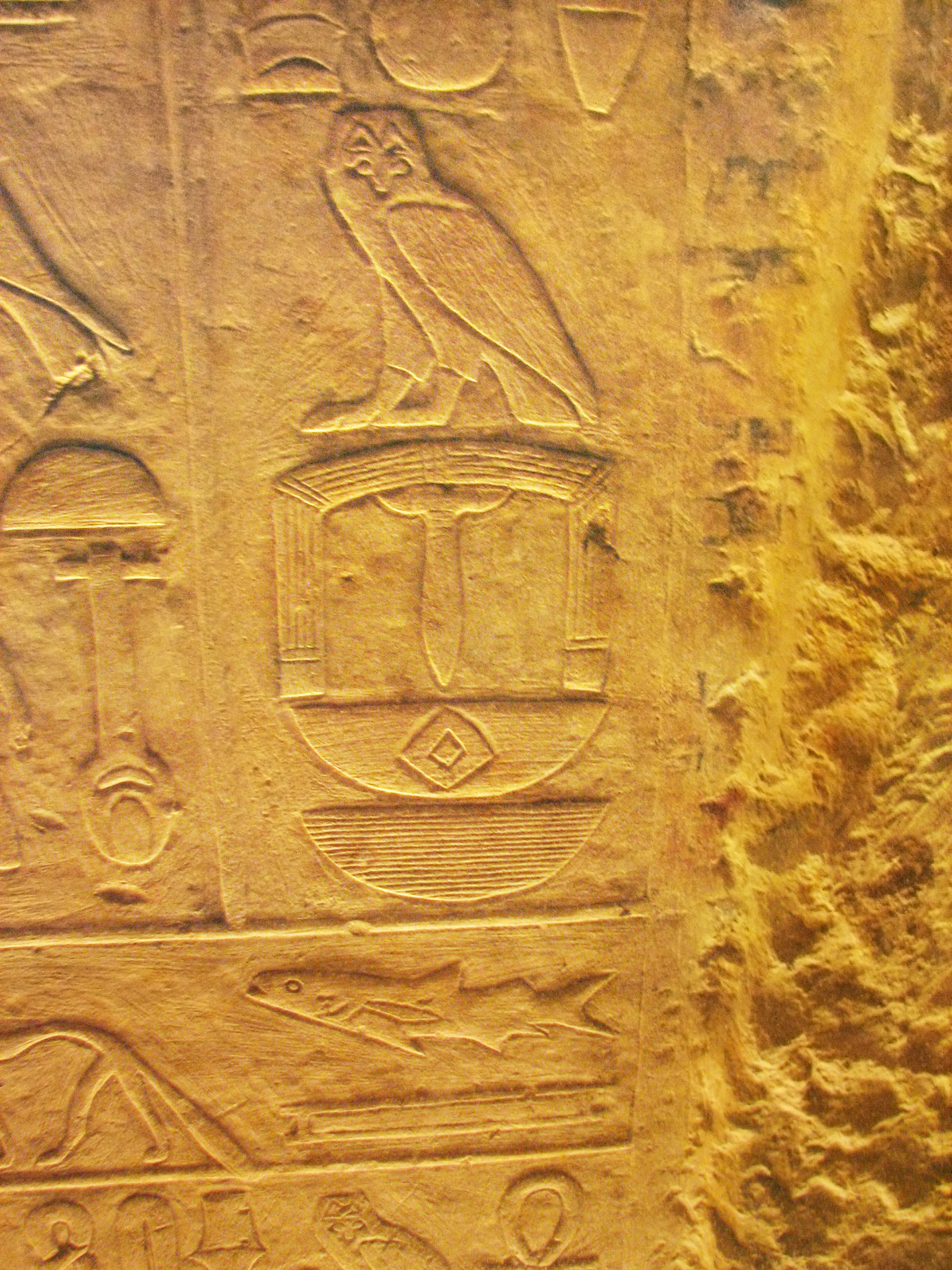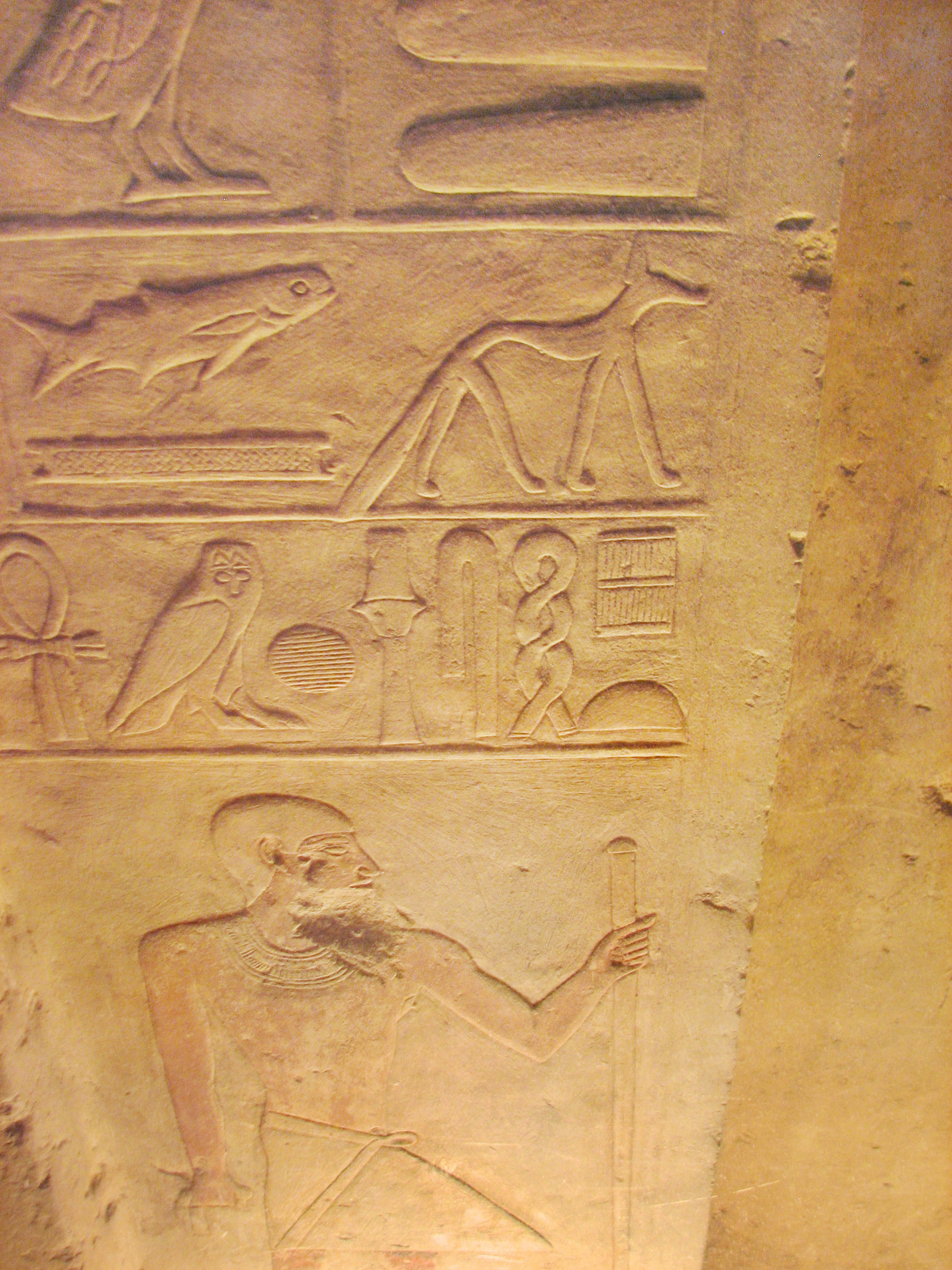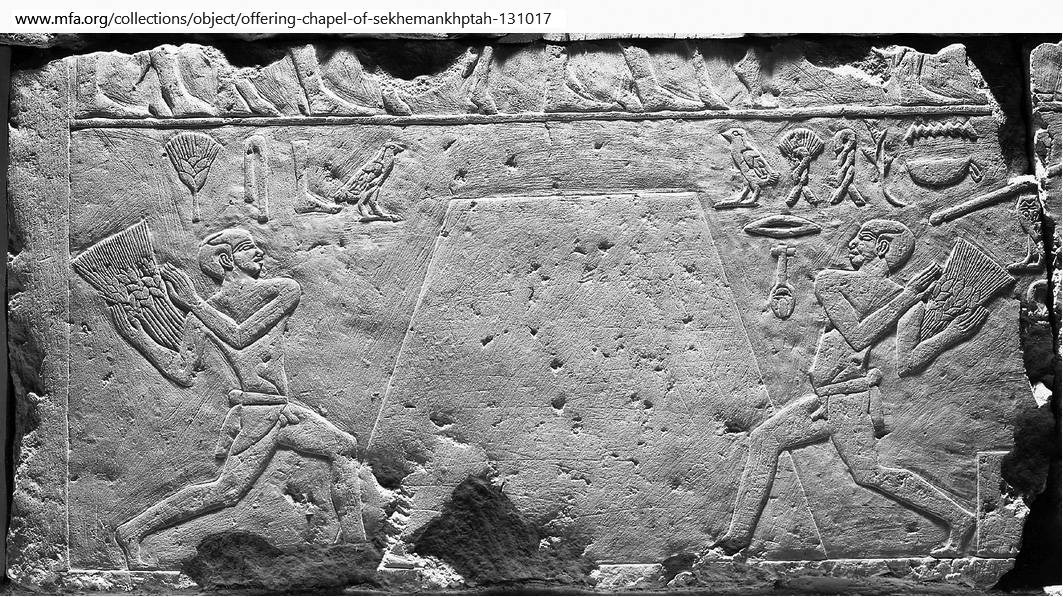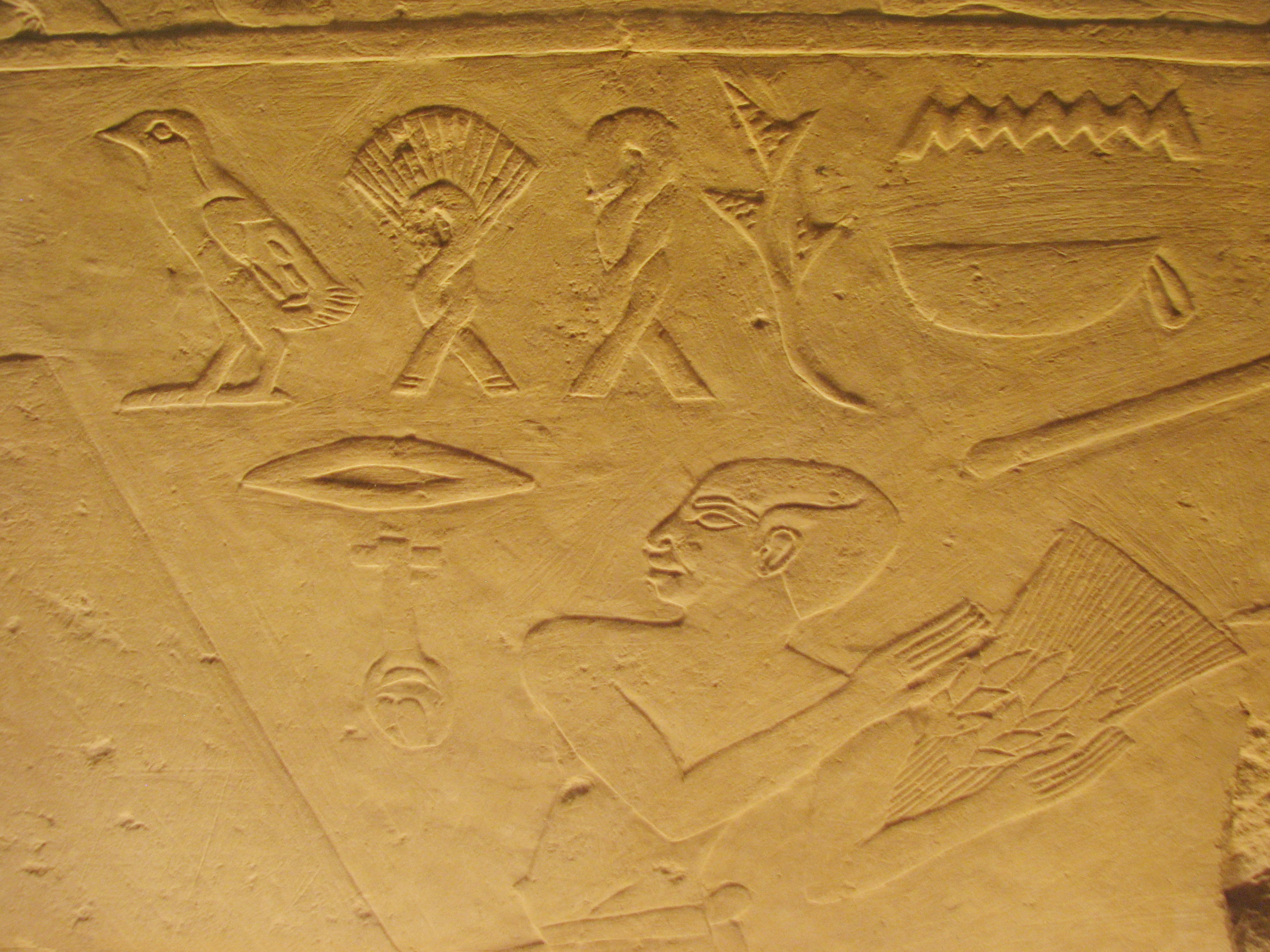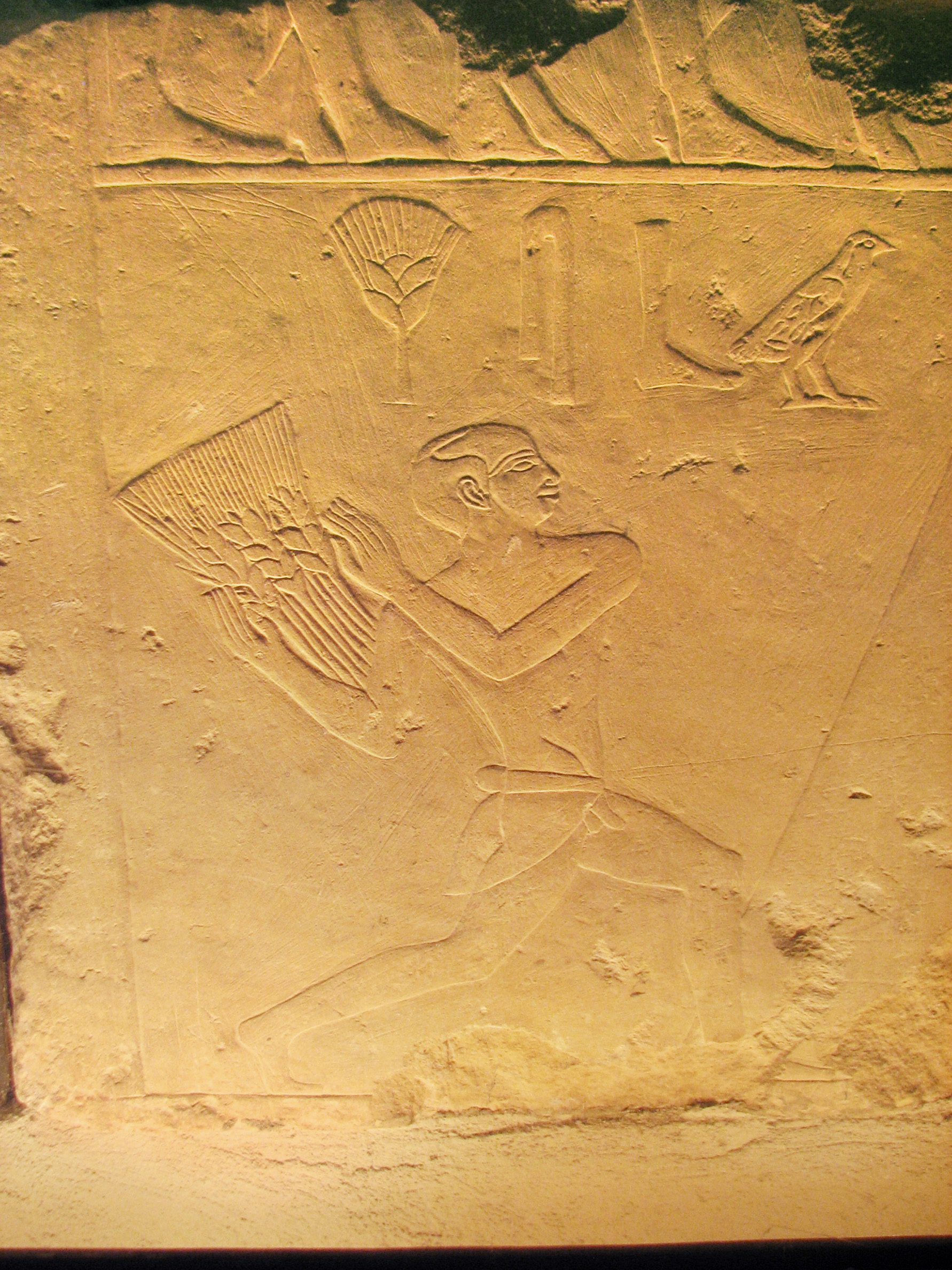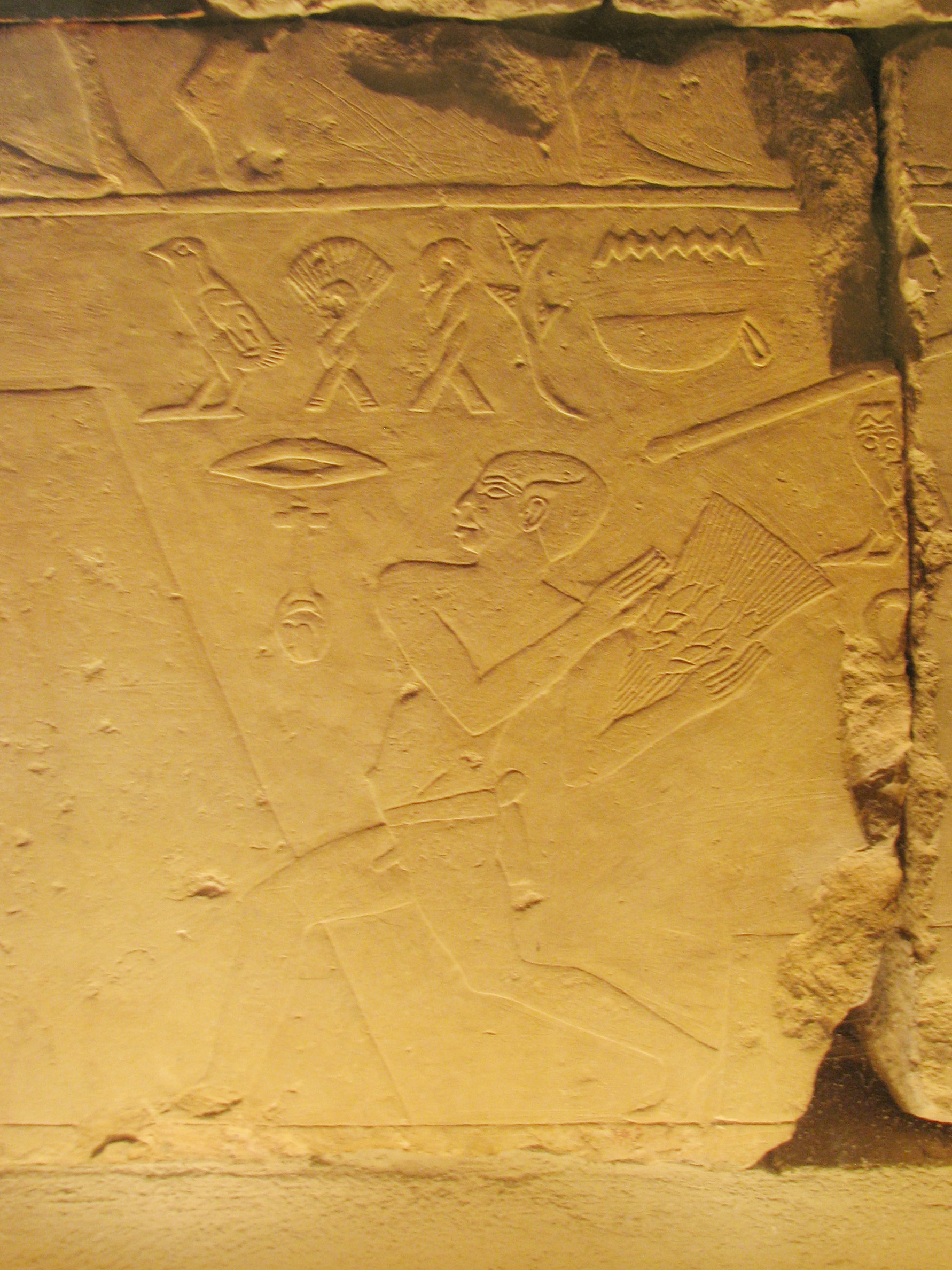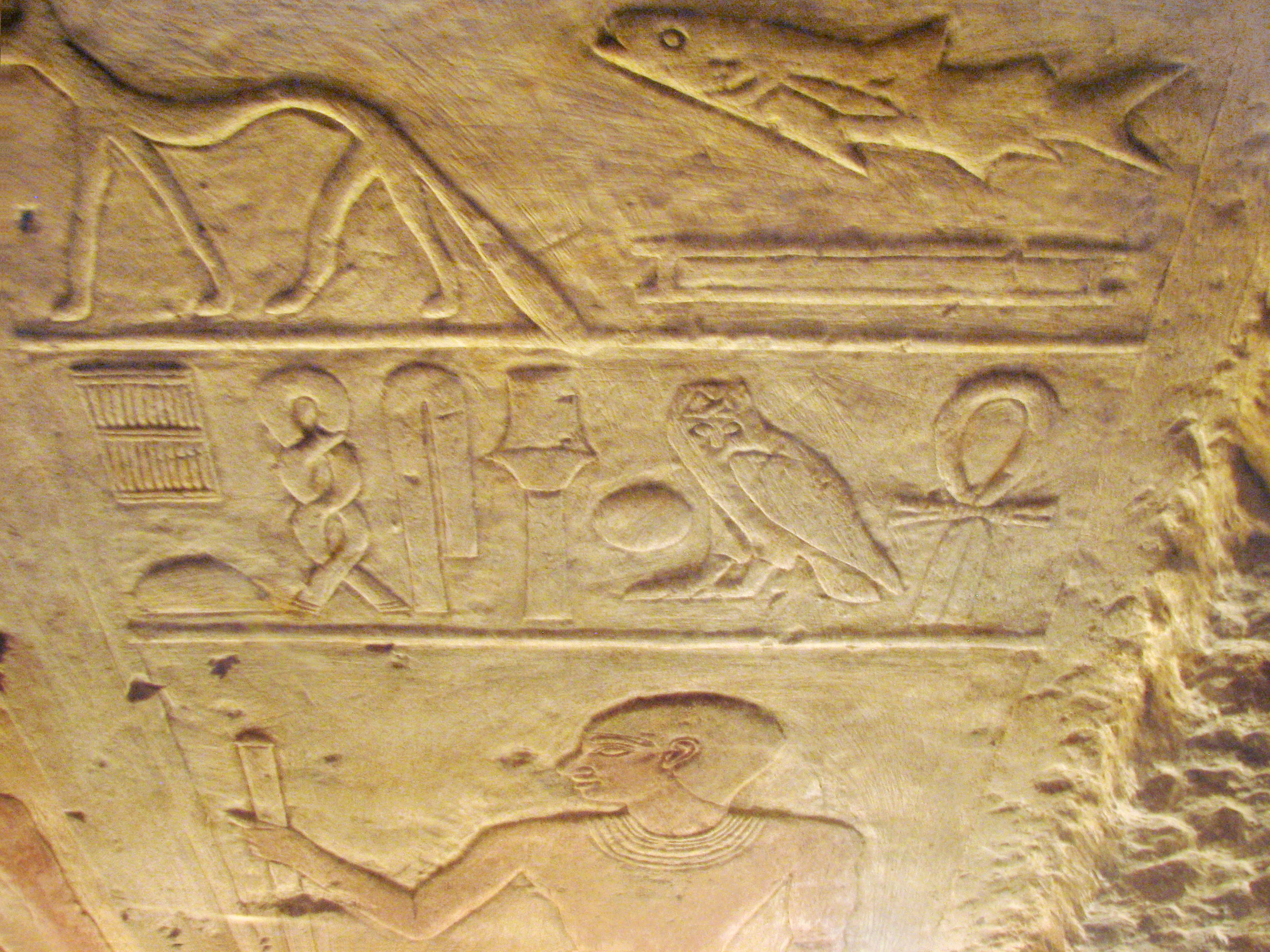
Offering chapel of Sekhemankhptah
Egypt, from Saqqara, Old Kingdom, Dynasty 5, 2465–2323 B.C.E.
Painted limestone
Emily Esther Sears Fund 1904, MFA #04.1760
Photos ©Joan Ann Lansberry, 2014
"This chapel comes from the tomb of Sekhemankhptah, a priest and scribe who held important judical and treasury offices during the Fifth Dynasty. The false door, inscribed with Sekhemankhptah's name and titles, followed by a prayer for offerings, occupies the entire west wall of the chapel. Sekhemankhptah appears on the north wall, seated at a table filled with tall, conical loaves of bread. Beside the table is a massive pile of food offerings. Below, offering bearers present trays laden with food and beverages. In the bottom register, butchers prepare cuts of meat.
"On the opposite wall, Sekhemankhptah inspects a variety of agricultural activities, such as plowing, sowing and reaping flax, and loading donkeys. In the registers above are a procession of desert wildlife, a duck hunting scene, and three papyrus boats filled with men engaged in a sport in which they attempt to knock each other into the water with poles. At the right end of each register, scribes report to Sekhemankhptah, some carrying their spare pencils tucked behind their ears. The wall opposite the false door shows a variety of birds emerging from a lush papyrus marsh. Below are scenes of cattle husbandry and butchery. "(From the info card)
In this and the first photo, Sekhemankhptah's name is clearly visible.
Sekhem'ankh-Ptah, "Powerful (and) alive (is) Ptah"

I was curious about the meaning of that weird spiky fish, and the jackal.
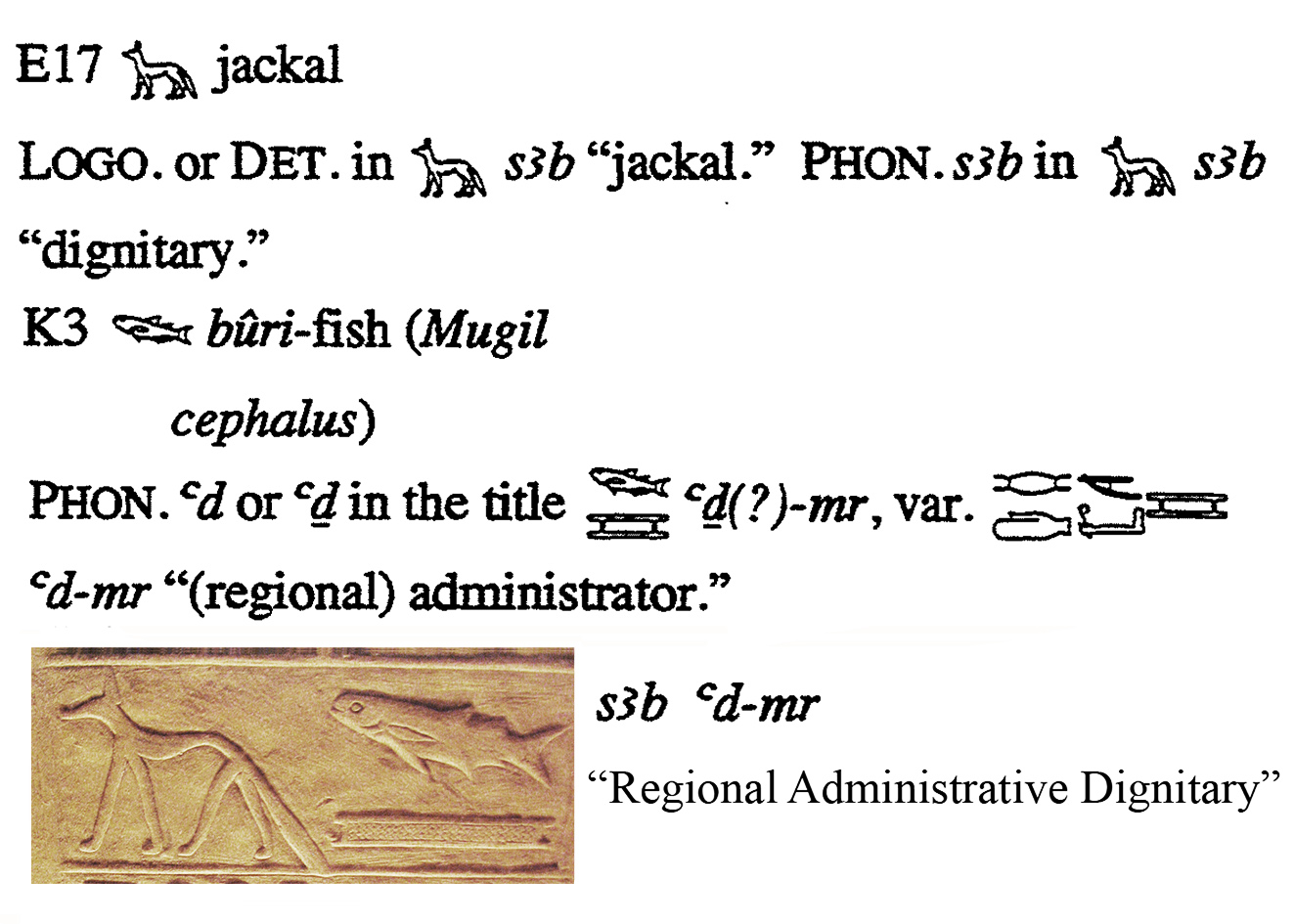
"Regional Administrative Dignitary" (Hieroglyphs from _Middle Egyptian Sign List_, by James E. Hoch)
In addition to this and his other important judical and treasury offices, he had a wife and two children. His wife was Princess Bwnefer, his son was Seshemnefer, and his daughter was Meritites (the one beloved of her father).
Info from _The Tombs of Iteti, Sekhen'ankh-Ptah and Kaemnofert at Giza_, by Alexander Badawy (University of California Press, 1976), page 21.
